With the start of a new Standard year, it is time for a new class of Hall of Fame inductees. Hall of Fame cards rotate out of Standard format and will then only be playable in Wild, in some Tavern Brawls, and in some single-player content.
In fact, this year we get the Hall of Fame a little early: the inductees will be retired from Standard already on March 26th even though Ashes of Outland does not launch until April 7th. Therefore, in addition to the long-term effect of cards leaving, there is also a short-term meta without Ashes of Outland and without the Hall of Fame cards.
The Hall of Fame rotation is also an opportunity to earn some free dust! You can find details about that from our Hall of Fame crafting guide.
In this article, I will examine the long-term effects of this year’s Hall of Fame and the direction the game is headed.
Hearthstone Hall of Fame Class of 2020
The Hall of Fame class of 2020 consists of two parts: neutral cards and Priest cards.
Five Neutral cards will move to Hall of Fame: Leeroy Jenkins, Mountain Giant, Mind Control Tech, Acolyte of Pain, and Spellbreaker.
Six Priest cards will move to Hall of Fame in conjunction with the Priest class rework: Auchenai Soulpriest, Divine Spirit, Holy Fire, Shadowform, Northshire Cleric, and Prophet Velen.
Leeroy Jenkins and the Slow Death of Charge
Charge is a controversial mechanic in Hearthstone. The ability to attack face immediately when played is naturally suited for pure face decks and for one-turn-kill combo decks. Both playstyles have a lot of fans, but both can also be extremely frustrating to play against. Face Hunter used to be one of the most despised archetypes in the game, and the brief combo meta we had during Rastakhan’s Rumble – although combo decks were still a minority even then – showed just how bad life can be when everything is fun and interactive.
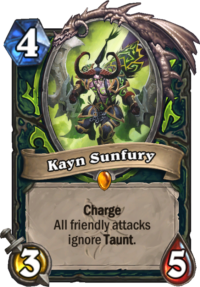
Blizzard has been reluctant to create new Charge cards for years, and almost all the Charge cards currently in Standard format are evergreens from Basic and Classic sets; the only exception is Dinotamer Brann, which is a class card with severe deck-building restrictions that prevent its use in aggro and combo decks. Evergreen Charge cards have also already been hit multiple times: Doomguard was sent to Hall of Fame earlier, Leeroy Jenkins was nerfed already before, and Charge and Warsong Commander were nerfed to actually not give minions Charge. Oh, Demon Hunter will get Kayn Sunfury, because Illidan needs his vengeance. Other than that, it is slim pickings when trying to find viable Charge minions.
Leeroy Jenkins saw universal play in aggro decks and as part of a burst finisher in a wide variety of decks ranging from Galakrond Rogue to Galakrond Warrior and Galakrond Warlock. (Seriously, the decks are very different despite them all being called Galakrond.)
Leeroy’s popularity is not because the card is somehow busted. Six Charge damage for five mana and with an additional downside of summoning minions for the opponent is not game-breaking by any means. Of course, players try everything in their power to make the most out of Leeroy: Rogues use Shadowstep and try to draw a free copy (up to 18 burst damage), Warriors use Inner Rage and Bloodsworn Mercenary and try to draw a +4/+4 buffed Leeroy with their Galakrond (up to 28 burst damage, 16 without the Galakrond buff), and Quest Hunters combine Leeroy with Unleash the Hounds and their Hero Power (up to 14 burst damage against an empty board). However, I just shot people in the face for more than 40 damage with my Malygos as recently as yesterday, so what’s the big deal?
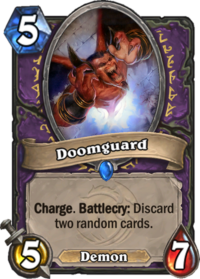
Leeroy has been ubiquitous, not because it is overpowered, but because it has been the only viable option for a burst finisher for many decks. Back when Doomguard was in Standard format, most Warlock decks opted to with that instead of Leeroy. With Leeroy gone, Blizzard will have much better control of how people can build burst damage into their decks: take away all Neutral sources of burst, and you limit the innovative solutions people can come up with. This makes the game more predictable and forces classes with no native burst damage cards to play board-based strategies.
Playing for the board is the key concept here. With less burst, board control and minion combat become more important. However, at the moment board control is often based on who gets their big swing cards first and fills the board with free Dragons, or gets to play seven free cards in a turn, or summons four random Demons that may or may not be big ones. Simply by moving the game to focus on the board does not mean that frustrating events stop happening, it just changes them from dying to burst to dying to a swing turn that cannot be answered unless you draw your own ultimate swing card: you will not even have the burst damage to end the game before you get overwhelmed.
Mountain Giant Was Too Useful
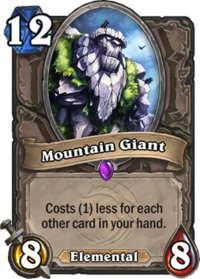
Giants have been some of the definitive big minions in Hearthstone. Each Giant has its own trick to get on the board cheaply, and the cards have been a fascinating deck-building challenge. Of the Classic set Giants, Molten Giant was already sent to Hall of Fame, and now Mountain Giant will follow suit. That leaves us with only Sea Giant left of the evergreen Giants with Mana Giant currently in Standard to keep it company.
While Blizzard has clearly been happy with Giants overall, as they keep making new variations of the theme, they do not want specific Giants to stay in Standard forever. Mountain Giant was a victim of its own success: by being a playable evergreen card in multiple archetypes, it became undesirable and got the boot.
Mind Control Tech as an Answer to Board-Flooding
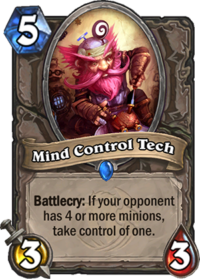
Mind Control Tech has always been a card that feels bad for someone. Because at least four minions have to be on the board for it to function, they are usually not of equal value and either player will feel robbed, no matter what Mind Control Tech steals.
However, the card sees hardly any play at the moment, so why rotate it out? The answer probably lies in board-based strategies. If Blizzard wants to promote board-based decks, then Mind Control Tech would become much more desirable in the new meta, and it would produce many new feel-bad moments for players.
That said, nothing is ever as simple as it looks. The expected value of Mind Control Tech is not high, so why do people include it in their decks? The only deck that can significantly improve its expected value is Shaman with Corrupt the Waters and Shudderwock: ways to multiply that single Battlecry effect to steal things again and again. Every other deck that has used Mind Control Tech has done so out of necessity when facing board-flooding decks: they have simply had no better tools to fight back, so they have used the only tool they have had access to. Sure, it can feel bad a lot, but it’s better than nothing. And nothing is what will be left now that it rotates out.
Acolyte of Pain and Limiting Neutral Card Draw
Acolyte of Pain is another evergreen card that has been too successful: it sees play in a wide variety of control and combo decks that want to draw cards. Warrior, Mage, and Paladin all make good use of the card as their draw engine, and Blizzard wants to focus more on class-specific tools for card draw, as they are more easily controlled and the amount of card draw available to each class more easily limited.
Spellbreaker and the Power of a Baseline Silence Effect

Blizzard has limited the power of Neutral Silence effects before with the nerf of Ironbeak Owl from two mana to three mana. After that, Spellbreaker became the most desirable Neutral Silence effect: even though it still remained more expensive than Ironbeak Owl, it has a reasonable stat line, so it was able to serve a dual purpose of being an actual minion and providing Silence. A cheap Owl had been more desirable for the Silence effect alone, but the almost worthless body made it worse when it became more expensive.
Now, Blizzard wants to cut down the power level of baseline Silence available to all classes and make Silence something your class either does well with class-specific cards or uses only in the most extreme circumstances.
Incidentally, this change will hurt budget players the most. Because budget decks cannot compete against full-cost decks in terms of raw power, Spellbreaker has often been a key card in them that provides a reasonable body on the board while removing some powerful effect from the opponent. Full-cost decks have often not included Spellbreaker because it has not been strong enough for them, but it has been one of the key tools for budget decks to close the gap a little. Now they will be left even more behind.
Priest Rework as an Omen of Things to Come
The Priest rework changes the class significantly. Priest becomes far more tempo-based and loses all of its burst win conditions: every card that can deal a lot of sudden damage has been culled from the class. There is still Inner Fire to give more attack to a high-health minion, but while there are several health buffs available to the class, they are not easily stacked up in a single turn.
Priest is the first model we have of the new board-based approach to the game. You live by the board and you die by the board.
More Board-Based, Less Inventive
Overall, the Hall of Fame changes move the game towards closer control of viable decks by Blizzard. With fewer multi-purpose Neutral cards, there are fewer new combinations available for players to test, and Blizzard can more accurately design the upcoming decks in their development process. The continuing removal of burst damage makes it less likely that you lose the game in a single turn directly, but it does not remove powerful swing cards that cannot be answered unless you draw your own swing card in response.
This does not mean that the game cannot be fun. If Blizzard succeeds in creating fun archetypes, there can still be a lot of interesting moments, and there is always the chance that something slips through and player innovation can still generate new things. However, step by step, Blizzard is moving towards more control of the meta.

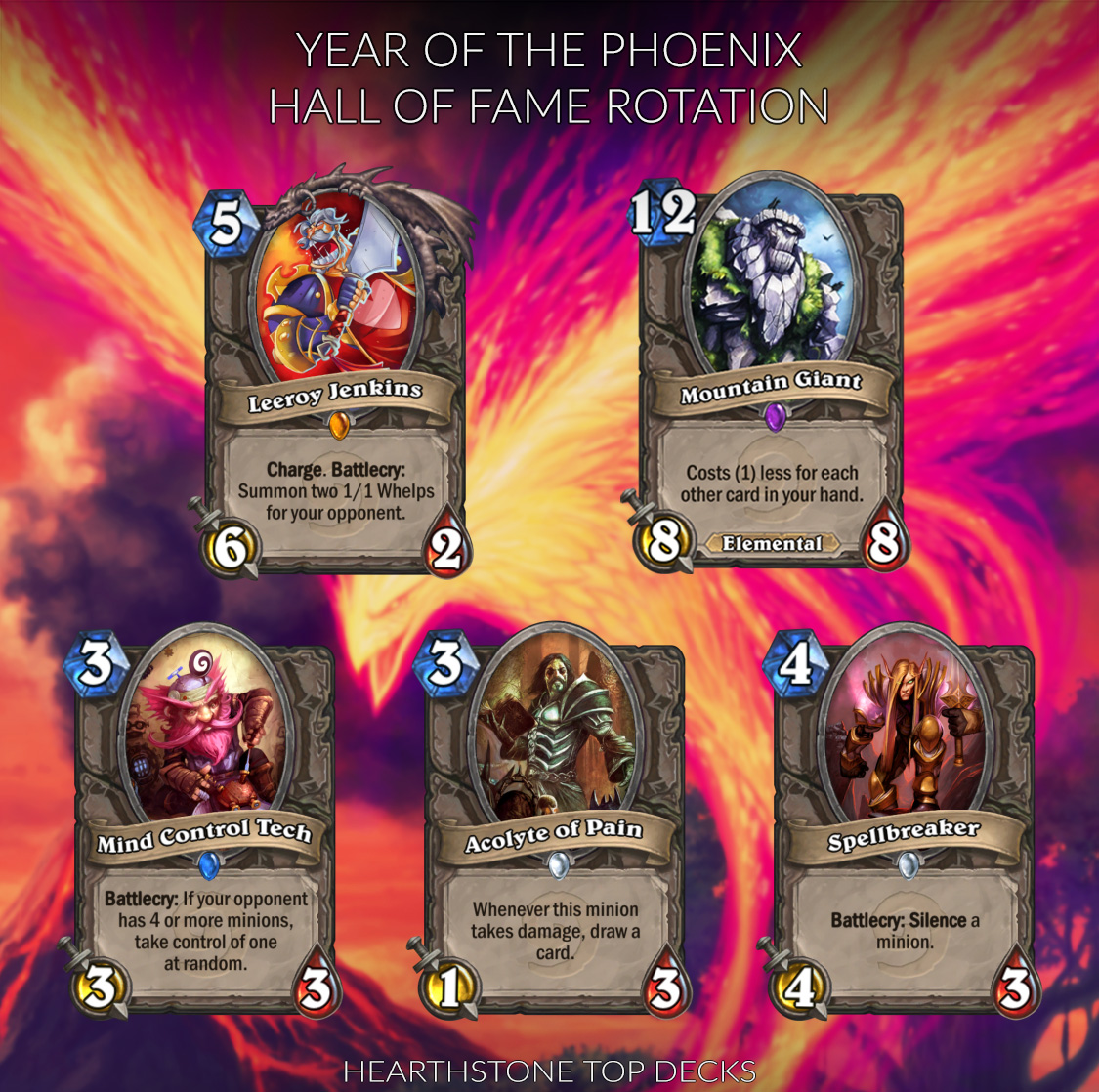

It’s trully disgusting, the way people at Blizzard navigate this game.
At least there will always be Wild avaliable for the ones who actually want to enjoy a game of Hearthstone instead of being forced to sit through endless tiring combats, grinding turns and things like a 10 manaspell that summons 7 99/99 with rush or whatever the new boringly “hot” thing gets into standard just to get people exited over anti-power creeping this game as a whole.
P.S: I trully hope that at least 1-2 decent cards will be printed into the game at low cost ( like max 4 ) so that Wild becomes a faster and more interesting format.
Nice article ! No more pain to speak to for those card draw.
Arena ladder here we come
You mean Wild!!! Because they do not leave Heartstone. They are already part of and not that much used in the format they are being locked in…
I mean “Arena” cuz the meta will be more board orientated, just like arena is. Or at least that is what they wanna do, more board fighting.